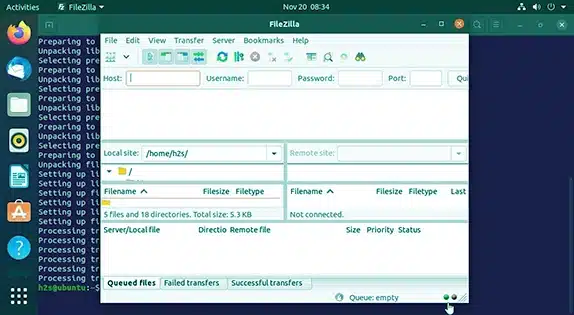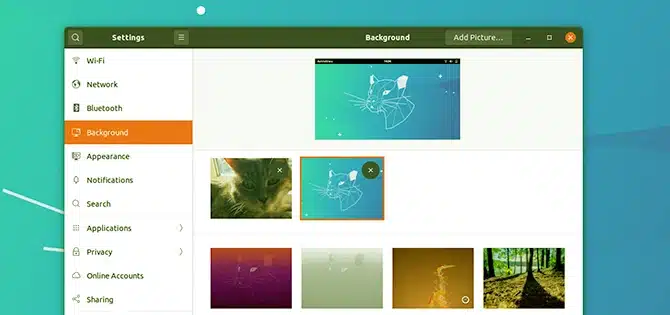Ubuntu’s “Lunar Lobster” release contains two new official remixes, as well as the first updated Ubuntu Kylin in around a year.
The 38th version of Ubuntu was released late last month, and while it is an interim release that will be phased out in January, there are some important changes that make it noteworthy. The most noticeable new official flavors are Ubuntu Cinnamon and Edubuntu.
All use the new “Subiquity” installer, which is built on Flutter and looks a little nicer than the old “Ubiquity.” However, it is not significantly more functional. The new installer’s window, like the old one, cannot be resized, thus if you have a lot of disk partitions, you won’t be able to see them all at once without scrolling. To use an existing partition, you must first select the existing format, which is an unnecessary extra step. We had hoped that the final version of the new installer would address these small flaws, but we were let down.

Cinnamon: When the latest LTS was released a year ago, the Reg FOSS desk looked into Ubuntu Cinnamon.
It is quite similar to the regular edition, but it replaces the GNOME desktop with the Cinnamon fork from the Linux Mint project. Ubuntu Cinnamon 23.04 features desktop version 5.6.7, which is only one minor release behind the current 5.6.8, which was released in mid-March.
Ubuntu Cinnamon differs from standard Ubuntu in a few ways. It includes a few extras, such as games (2048, Chess, Mahjong, and Sudoku), the Zutty terminal emulator (in addition to the normal GNOME Terminal), and the Synaptic package manager. Otherwise, the majority of the supplied apps are standard GNOME fare.
This indicates that there is a mix of appearances. Synaptic and the Nemo file manager, for example, have classic menu bars. Others use GNOME’s CSD, which means that instead of a typical separate title bar, they feature a combined title and control bar with some buttons and a mobile-phone-style “hamburger menu.” This is a three-lined button that displays a simple primary menu.
The default theme also fashions Cinnamon’s window-control menu with three horizontal bars, giving it the appearance of a hamburger menu. This is incoherent and perplexing. To add to the whimsy, a few apps, such as GNOME Disks, style their hamburger menu with a vertical column of three dots rather than lines. Hamburger menus, in general, feature a fairly restricted range of selections, are slower for fast readers, and are less accessible for screen-reader users. In the view of this jaded old vulture, the hamburger menu concept was a horrible one to begin with, and they should have kept on mobile phones – not that they’re excellent UI even on mobile phones.
Having all that, Cinnamon is a pleasant enough desktop environment to use. We continue to prefer it over GNOME, though the case against “GNOME Flashback,” as the optional GNOME Classic is now known, is less apparent. In Lunar, Cinnamon’s fractional scaling works properly and in testing on a HiDPI Thinkpad, we found a scale of 125 percent to give a decent mix between screen space and suitably sized text, while remaining sharp.
Edubuntu: Edubuntu, one of the other now-official flavors, is more of a welcome homecoming than a new remix. The original Edubuntu, which was based on the Unity desktop, vanished shortly after we discussed it in 2013.
Edubuntu 23.04 is back under the new administration, nearly a decade after the last version. It has the same name and emblem as the official Ubuntu (the “circle of friends” but with a raised hand), but it now uses the GNOME 44 desktop environment.
The most significant update is a large number of included educational apps for children, which are divided into four metapackages. We mention the packages and their contents in a footnote at the bottom for completeness’ sake, and because numerous web lists link to the original Edubuntu from a decade ago.
If you look through the list, you’ll find that some of the metapackages overlap. That’s without the extra components we’ve left off because they’re standard Ubuntu components, like LibreOffice. Nonetheless, it’s a sizable collection.
There isn’t much in Edubuntu that you couldn’t put together yourself, but it appears to be a well-curated collection that could be a significant time-saver for a harried parent – or perhaps even more so, a time-pressed teacher trying to provision a roomful of old PCs on a shoestring budget.
Ubuntu Kylin: The most recent modification to resurface is Ubuntu Kylin, Canonical’s distribution aimed at the burgeoning Chinese market. We examined Ubuntu Kylin 22.04 last year, and little has changed in this new release, which could explain why there was no Ubuntu Kylin 22.10 release. Version 23.04 continues to use UKUI desktop version 3, despite the fact that a new version, UKUI 4.0, is in the works.
Kylin appears more intimidating than it is: it boots in Chinese by default, but even if you don’t speak the language, it’s simple to install. There are two alternatives, as usual: “try Ubuntu” and “install Ubuntu.” When you click the second option, a list of languages appears. Choose “English” and you’re ready to go.
After that, some Chinese writing will surface on occasion, but you can ignore it. There’s a Chinese app store and the Fcitx tool for entering Chinese text, but that’s about it. Both can be removed without causing any damage. The Chinese app market features an Android app category, but this does not work on the foreign edition because no Android runtime is given. The international edition also includes regular LibreOffice instead of the proprietary-freeware WPS Office available in the Chinese distribution of Ubuntu Kylin 22.04.
Kylin and UKUI are favorites of ours. It’s sleek and colorful, with an animated boot screen and a little more bling than typical Western desktop computers. The Chinese government’s 3-5-2 effort to remove foreign technology, including Windows and macOS, is set to end this year. There are just two well-known desktop Chinese distributions in the West. Linux Deepin and its domestic parent distribution UOS are part of one family. The other is the Kylin family, which is based on Ubuntu, as we reported last year. China has an estimated 350 million PCs, and the government’s goal was to totally replace Windows with Kylin or UOS.
As a result, UKUI, along with the superficially identical Deepin Desktop Environment, may be one of the world’s most extensively used Linux desktops.
Even after the COVID outbreak, Chromebook suppliers were still selling six million machines every quarter last year, with over 100 million shipped in the previous four years or so. Deepin and Kylin are more likely to be used than ChromeOS.
In the Western world, however, Ubuntu Cinnamon is a more secure option than Ubuntu Kylin. If you have a HiDPI screen, the current version’s now-functional fractional scaling functionality puts it ahead of Xubuntu, Lubuntu, and Ubuntu Kylin – and, in our humble opinion, Ubuntu Cinnamon looks better than Kubuntu.
















